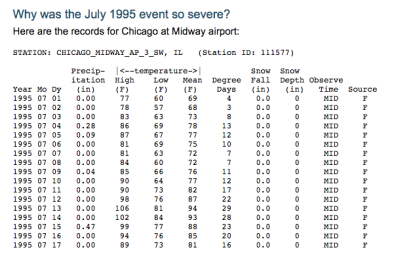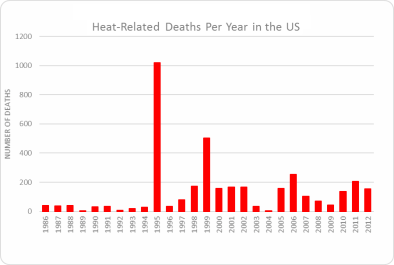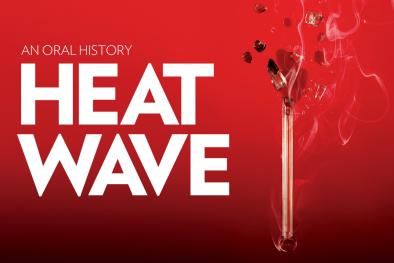The 1995 Chicago Heat Wave: How Likely Is a Recurrence?
States that previous studies have put the Chicago heat wave into historical perspective, and that the extreme high apparent temperatures (which the authors estimate to have a 23-year return period) are only part of the reason the event was so remarkable
States there is a factor of greater significance: the very high temperatures that persisted day and night over an extended 48-hour period
Presents analysis indicating that for Chicago such an extended period of continuously high day and night apparent temperature is unprecedented in modern times
Calculates the 2-day period where the minimum apparent temperature failed to go below 31.5°C (89°F) to be an extremely rare event (probability of occurrence <0.1% or 1 in 1,000) based on a 10,000-year-long simulation of a probabilistic model with four-parameters (1. temperatures related to the mean, 2. the intraseasonal daily variance, 3. the interannual variance, and 4. the day-to-day persistence of temperature)
Authors show that accurate projections of the frequency, severity, and duration of heat waves in the Midwest require accurate projections not only of the mean, the interannual variance, the intraseasonal variance, and day-to-day persistence, but also the interrelationships among these quantities within different synoptic-climatic regimes
Related Content





